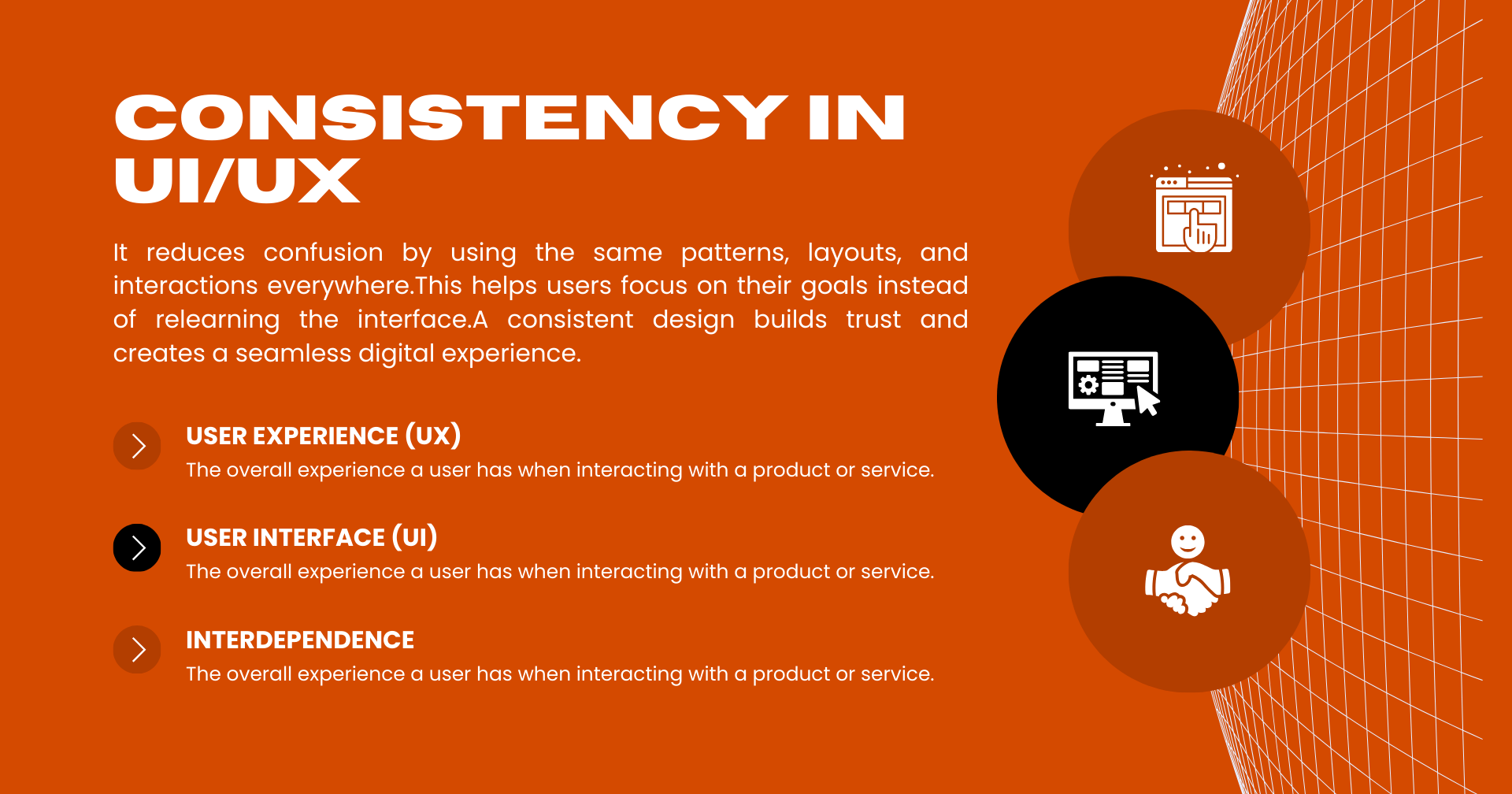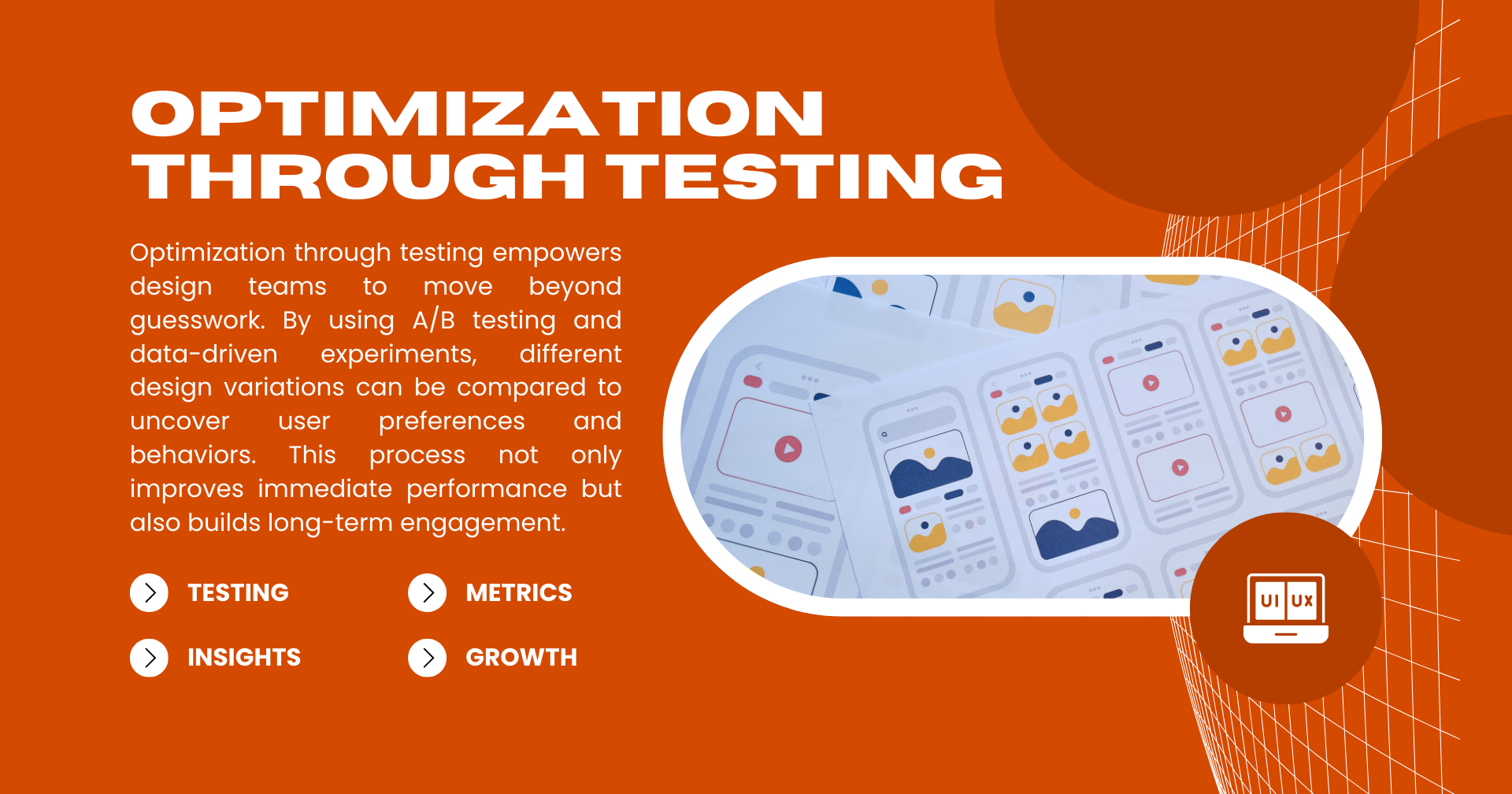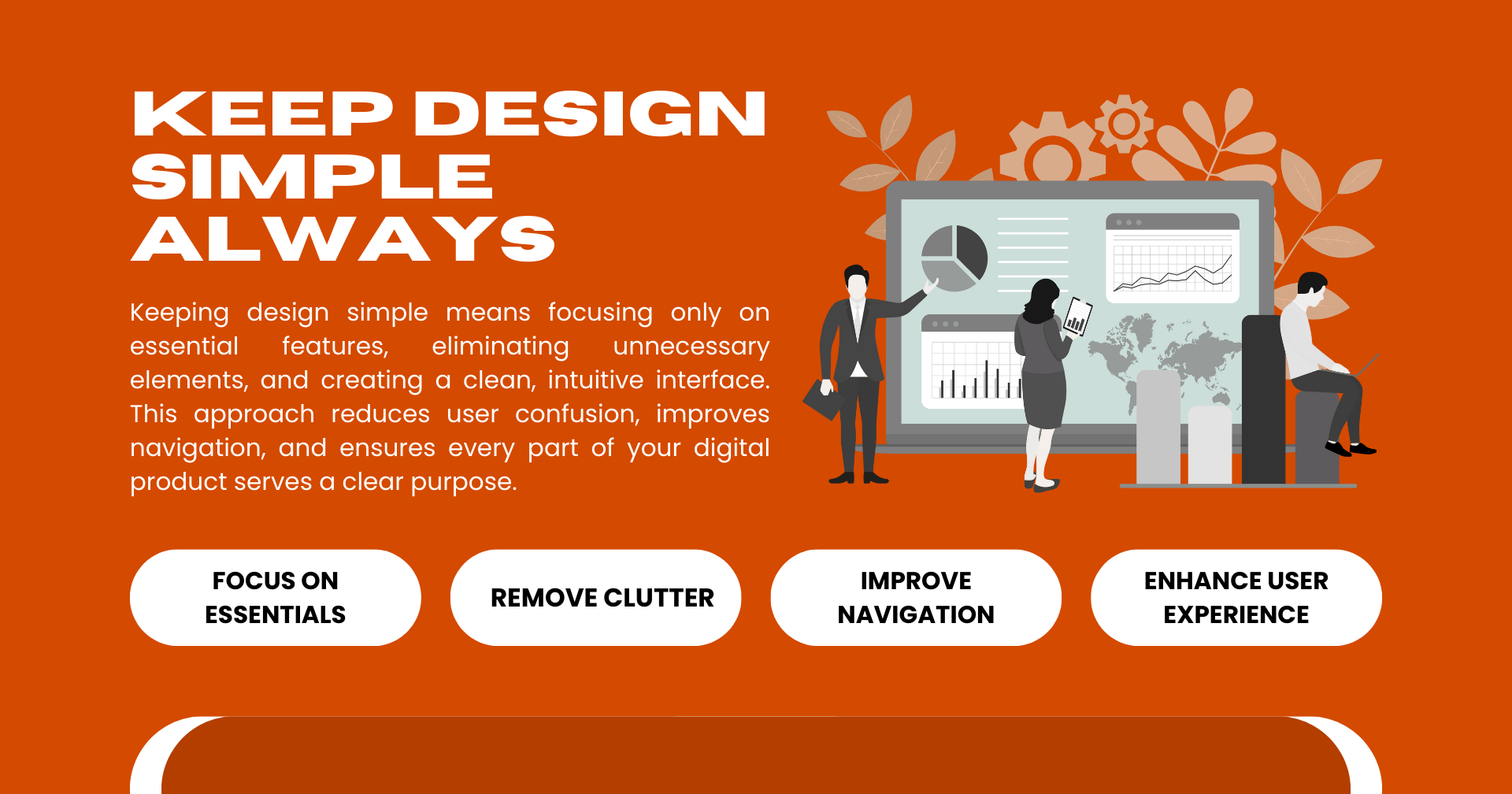Introduction
In today’s digital landscape, UI UX design has emerged as the cornerstone of successful online businesses.Users now expect websites and applications to be intuitive, visually appealing, and easy to navigate. A well-crafted UI UX design can make the difference between a product that delights users and one that frustrates them.
As digital experiences evolve, so do user expectations. Modern users demand seamless interactions, fast load times, mobile responsiveness, and clear navigation paths. Businesses that fail to meet these standards risk losing engagement, conversions, and customer loyalty.
UI UX design is not just about aesthetics; it’s about creating meaningful interactions. Every button, menu, and visual element contributes to how users perceive and engage with a product. Thoughtful design enhances usability, reduces friction, and ensures that users can achieve their goals effortlessly.
This comprehensive guide explores the core principles of UI UX design and how they can be applied to transform your digital presence. From understanding user behavior to designing intuitive interfaces, mastering these principles allows businesses to create experiences that are both enjoyable and functional.
By prioritizing UI UX design, businesses can drive measurable results. Improved user satisfaction leads to longer session durations, higher conversion rates, and stronger brand loyalty. Investing in design is not just a creative choice—it’s a strategic business decision that directly impacts growth and performance.
Ultimately, mastering UI UX design means bridging the gap between technology and human behavior. It’s about creating digital experiences that feel natural, efficient, and engaging, helping businesses stand out in a crowded online marketplace.
Understanding the Fundamentals of UI UX Design
UI UX design represents the perfect marriage between aesthetics and functionality. While user interface design focuses on the visual elements users interact with—colors, typography, buttons, and layouts—the UX component ensures these interactions feel natural and purposeful. Together, they create digital experiences that not only look professional but also guide users effortlessly toward their goals.
The importance of UI UX design becomes evident when examining user behavior patterns. Research consistently shows that users form opinions about websites within milliseconds of their first interaction. A poorly executed interface can drive potential customers away before they even explore your offerings, while thoughtfully crafted experiences encourage engagement and build lasting relationships.
Modern UI UX design goes beyond creating attractive interfaces. It involves understanding user psychology, anticipating needs, and removing friction from critical user journeys. This holistic approach ensures that every design decision serves both user needs and business objectives, creating sustainable competitive advantages in crowded digital markets.
The Strategic Business Impact of UI UX Design
Companies investing in professional UI UX design consistently outperform competitors across multiple metrics. Enhanced conversion rates, improved customer retention, and reduced support costs are just a few measurable benefits that demonstrate design’s direct impact on business success.
Consider the website development process: businesses that prioritize user experience from the initial planning stages typically see significantly higher ROI compared to those treating design as an afterthought. When UI UX design principles guide website development, the result is a platform that naturally converts visitors into customers while providing exceptional user satisfaction.
The economic benefits extend beyond immediate conversions. Well-designed digital products reduce customer acquisition costs by improving word-of-mouth referrals and organic growth. Users who experience seamless interactions become brand advocates, sharing positive experiences and
Essential Elements of Effective UI UX Design
Visual Hierarchy and User Flow
Creating effective visual hierarchies requires strategic use of size, color, contrast, and positioning to guide user attention. Primary actions should dominate the visual landscape, while secondary elements provide supporting information without creating distraction. This approach ensures users can quickly identify and complete their intended tasks.
The interface designer must consider how users naturally scan content, typically following Z or F patterns on web pages. By aligning important elements with these natural reading patterns, UI UX design becomes more intuitive and effective. Color psychology also plays a crucial role, with different hues evoking specific emotions and encouraging particular actions.
https://www.interaction-design.org/literature/topics/branding-in-ux-design
Consistency and Design Systems
Consistency across all touchpoints builds user confidence and reduces learning curves. When users encounter familiar patterns and interactions throughout your digital ecosystem, they can focus on their goals rather than figuring out how to navigate your interface. This consistency should extend across your mobile app, website, and any other digital platforms.
Design systems document these standards, providing reusable components and clear guidelines for maintaining consistency. These systems become particularly valuable as organizations scale, ensuring that new features and updates maintain the established UI UX design quality that users expect.

The Complete UI UX Design Process
Research and Discovery
Every successful UI UX design project begins with comprehensive research. Understanding your target audience, their behaviors, pain points, and goals provides the foundation for all subsequent design decisions. This research phase often reveals surprising insights that challenge assumptions and lead to more effective solutions.
User research methods include surveys, interviews, analytics review, and competitive analysis. The wireframe development process should be informed by these insights, ensuring that structural decisions align with actual user needs rather than internal assumptions about how people interact with digital products.
Prototyping and Testing
Wireframes serve as the blueprint for your digital experience, mapping out content hierarchy and functional relationships without the distraction of visual design elements.
Prototyping is a crucial step in the UI UX design process because it allows designers and developers to experiment with structure and functionality before committing to full-scale development. These skeletal layouts, often referred to as wireframes, focus on content placement, navigation flow, and overall layout without the distraction of detailed visual design.
By creating prototypes early, teams can iterate quickly on structural decisions, ensuring that the foundation of the user interface supports intuitive navigation and user goals. This reduces the likelihood of major revisions later in the design process, saving both time and resources.
Interactive prototypes take wireframes a step further by simulating real user interactions. These clickable or dynamic mockups allow stakeholders and team members to experience the flow of the application or website as if it were already built. This hands-on approach provides immediate insights into usability and functionality.
User testing with prototypes is essential for identifying potential issues before development begins. By observing how real users interact with a prototype, designers can uncover pain points, confusing layouts, or unexpected behaviors. Addressing these concerns early reduces the cost and effort of fixing problems after the product is fully developed.
Prototyping and testing also foster collaboration between designers, developers, and stakeholders. Feedback loops are faster and more effective when participants can see and interact with a tangible representation of the product. This collaborative approach ensures alignment across teams and improves decision-making throughout the design process.
Ultimately, investing in prototyping and testing leads to more polished final products. It ensures that the final UI UX design is intuitive, functional, and aligned with user expectations. Businesses benefit from higher user satisfaction, increased engagement, and a smoother path to product success.
Mobile-First UI UX Design Strategies
With mobile traffic dominating digital interactions, UI UX design must prioritize mobile experiences. This mobile-first approach involves designing for the smallest screens first, focusing on essential functionality, then scaling up for larger devices. This constraint-driven process often results in cleaner, more focused designs across all platforms.
Touch interface considerations fundamentally differ from desktop interactions. Finger-friendly button sizes, intuitive gesture patterns, and thumb-reach optimization become critical factors in mobile UI UX design. These considerations ensure that users can comfortably navigate your interface regardless of how they hold their device.
Performance optimization also becomes crucial in mobile contexts. Users expect fast loading times and smooth interactions, even on slower network connections. Efficient UI UX design balances visual appeal with technical performance, ensuring excellent experiences across diverse conditions.
Understanding User Psychology
Effective UI UX design goes beyond aesthetics; it leverages principles from behavioral psychology to guide user decisions. By understanding how users think, feel, and interact with digital products, designers can create experiences that feel intuitive and effortless. Psychological triggers like social proof, urgency, and clear value propositions help shape behavior while maintaining trust.
Social proof, such as reviews, ratings, or testimonials, reassures users that a product or service is reliable and valued by others. This simple psychological cue can significantly influence decision-making and build confidence in the user journey.
Urgency is another powerful tool in UI UX design. Limited-time offers, low-stock notifications, or countdown timers motivate users to take action without feeling pressured. When used appropriately, these tactics can enhance engagement and conversions while maintaining a positive user experience.
Clear value propositions are essential for guiding users toward desired actions. Communicating benefits, features, and outcomes upfront allows users to make informed decisions quickly. A well-crafted message aligned with visual hierarchy and placement ensures that users understand the value of a product or service immediately.
The checkout process on ecommerce websites provides a practical example of conversion-focused design. By minimizing form fields, offering multiple payment options, and clearly communicating security measures, designers can reduce friction, lower cart abandonment rates, and increase overall user satisfaction. Every small decision in the process is informed by user psychology to optimize outcomes.
Ultimately, understanding user psychology allows designers to create digital experiences that feel natural, helpful, and persuasive without being manipulative. By focusing on genuine value delivery and empathetic design, businesses can drive engagement, loyalty, and conversions effectively.
Optimization Through Testing
A/B testing provides data-driven insights for optimizing UI UX design decisions. By systematically testing different approaches and measuring results, teams can make informed improvements rather than relying on assumptions or personal preferences. This scientific approach often reveals surprising insights about user preferences and behaviors.
Testing should extend beyond conversion metrics to include user satisfaction and long-term engagement. While short-term optimizations might improve immediate conversions, sustainable UI UX design focuses on building lasting user relationships that drive lifetime value.

Platform-Specific Considerations
Web Design Excellence
Web design websites must balance creativity with usability, ensuring that innovative visual treatments don’t compromise core functionality. Modern web browsers support sophisticated interactions and animations, but these enhancements should serve specific purposes rather than existing purely for visual impact.
Responsive design ensures consistent experiences across devices, but truly effective UI UX design goes beyond technical responsiveness to consider context-specific user needs. Desktop users might have different goals and attention spans compared to mobile users, requiring thoughtful adaptation of content and functionality.
Application Development
Whether developing native applications or progressive web apps, UI UX design must consider platform-specific conventions while maintaining brand consistency. Users expect familiar interaction patterns that match their device’s operating system, but your brand identity should still shine through these platform requirements.
The appdesign process involves careful consideration of app store guidelines, platform capabilities, and user expectations. Successful applications balance innovation with familiarity, providing fresh experiences within comfortable interaction frameworks.
Building Strong Brand Identity Through Design
UI UX design serves as a primary brand touchpoint in digital environments. Every visual choice—from color palettes to typography selections—communicates brand personality and values. Consistency in these elements across all digital touchpoints reinforces brand recognition and builds user trust.
The process of branding a logo extends throughout the entire interface, with logo placement, sizing, and context contributing to overall brand perception. However, effective brand integration goes beyond logo placement to encompass the entire interaction experience, ensuring that brand personality emerges through every user touchpoint.
Common Pitfalls and Solutions
Avoiding Over-Complexity
One frequent mistake in UI UX design is adding unnecessary features or visual elements that complicate rather than enhance the user experience. Feature creep occurs when teams lose sight of core user needs, resulting in cluttered interfaces that confuse rather than assist users. Regular design audits help identify opportunities for simplification.
Every interface element should serve a clear purpose and be used frequently enough to justify its presence. This disciplined approach results in cleaner, more effective designs that better serve user needs.

Maintaining Performance Standards
Beautiful designs that load slowly provide poor user experiences regardless of their visual appeal. UI UX design must balance aesthetic goals with technical performance, ensuring that visual enhancements don’t compromise loading times or interaction responsiveness.
Collaboration between designers and developers throughout the design process helps identify performance implications of design decisions. This partnership ensures that final implementations maintain both visual quality and technical performance standards.
Future Trends and Emerging Technologies
The field of UI UX design continues evolving as new technologies create fresh interaction possibilities. Voice interfaces, augmented reality, and artificial intelligence are expanding the definition of user interface beyond traditional screens, requiring designers to consider multi-modal interaction patterns.
However, fundamental usability principles remain constant even as technologies evolve. User needs for clarity, efficiency, and satisfaction transcend specific interface technologies. Successful UI UX design adapts to new platforms while maintaining focus on core user experience quality.
Measuring Design Success
Effective UI UX design produces measurable improvements in user satisfaction, business metrics, and long-term customer relationships. Key performance indicators should align with business objectives while reflecting genuine user value creation. This balanced approach ensures that optimization efforts serve both user needs and organizational goals.
To truly assess success, key performance indicators (KPIs) should be aligned with both organizational goals and the real value delivered to users. This balance ensures that design decisions benefit the business while enhancing the user experience.
Quantitative data plays a crucial role in measuring design success. Analytics tools track metrics such as page views, session duration, bounce rates, conversion rates, and click-through behavior. These numbers provide insights into how users interact with the design, highlighting which elements are effective and where friction may occur.
Qualitative feedback is equally important. Collecting user opinions through surveys, usability testing, interviews, and support interactions gives designers deeper understanding of how people perceive and experience the interface. This helps uncover pain points that numbers alone might not reveal.
Combining quantitative and qualitative data creates a comprehensive picture of design effectiveness. Teams can analyze patterns in user behavior alongside subjective experiences to prioritize improvements and make informed decisions for iterative design enhancements.
Measuring design success is not a one-time task; it is an ongoing process. Regular evaluation ensures that interfaces evolve with changing user expectations, technological advancements, and business goals. By continuously tracking performance and iterating based on insights, businesses can maintain a competitive edge in user experience.
Ultimately, a data-driven approach to UI UX design ensures that every optimization contributes meaningfully to both user satisfaction and organizational objectives. By measuring impact and learning from insights, teams can create digital experiences that are not only engaging but also drive long-term growth and loyalty.
Conclusion: The Strategic Value of UI UX Design
In an increasingly digital world, UI UX design has become essential for business success. Organizations that prioritize user experience consistently outperform competitors through improved customer satisfaction, higher conversion rates, and sustainable competitive advantages. The investment in professional UI UX design pays dividends through multiple business metrics while creating genuine value for users.
As digital experiences become increasingly central to business success, design quality will continue serving as a primary differentiator between successful and struggling organizations. By following the principles and processes outlined in this guide, businesses can create digital experiences that truly serve users while driving measurable results.
The future belongs to organizations that understand design’s strategic importance and invest accordingly in creating exceptional user experiences that build lasting customer relationships.
UI UX design is no longer an optional component of digital products—it is a critical factor in determining user satisfaction, engagement, and business success. Exceptional design goes beyond aesthetics, focusing on usability, accessibility, and meaningful interactions that align with user needs.
By understanding user psychology, businesses can create interfaces that feel intuitive, natural, and persuasive without being manipulative. Applying principles like social proof, urgency, and clear value propositions helps guide user behavior while maintaining trust and credibility.
Prototyping and testing are essential steps in the design process. Iterative development allows teams to identify and resolve usability issues early, saving time and resources while ensuring a polished final product. Interactive prototypes also facilitate collaboration between designers, developers, and stakeholders, aligning vision with execution.
Measuring design success through both quantitative analytics and qualitative feedback ensures that decisions are informed and impactful. Tracking KPIs like engagement rates, conversion metrics, and user satisfaction helps businesses continuously improve digital experiences while meeting organizational objectives.
Forward-thinking UI UX strategies also embrace emerging trends and technologies. From mobile-first and responsive design to accessibility, AI-powered personalization, and immersive experiences, designers must anticipate future user expectations to remain competitive in a rapidly evolving digital landscape.
Investing in professional UI UX design ultimately drives tangible business results. Improved usability leads to higher conversion rates, longer user engagement, stronger brand loyalty, and measurable growth over time. A well-designed interface not only delights users but also supports strategic business goals.
In conclusion, mastering UI UX design is about creating experiences that are functional, enjoyable, and meaningful. By combining user research, psychology, prototyping, testing, and continuous measurement, businesses can deliver digital experiences that stand out, foster loyalty, and achieve lasting success in a competitive online environment.


